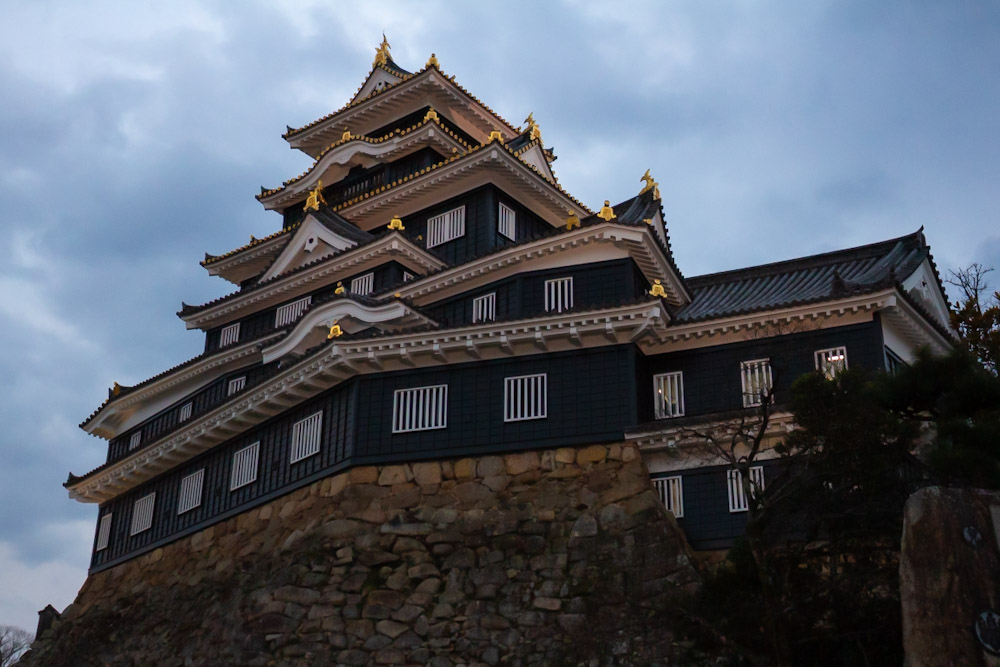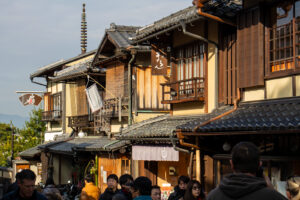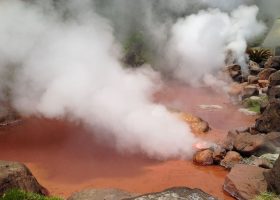Covered in black clapboards, Okayama Castle is known as Ujo, or “crow castle.” Fittingly, it sits atop one of three hills overlooking the Asahi river. Perhaps even more fittingly, it once served as the headquarters for Ukita Naoie, a Warring States-era daimyo who is considered one of Japan’s “Three Great Villians”.
There were three hills near the site where present-day Okayama Castle is located: Okayama, Ishiyama, and Tenjinyama. Ukita aquired the castle on Ishiyama in 1570, after killing its then-lord, Kanemitsu Munetaka.
Ukita was born in Okayama Prefecture in 1529 to a samurai family. He became the head of his family at the age of seven, after his grandfather was assasinated by the Shimamura clan. He later entered into the service of a local lord named Urakami Munekage. After marrying the daughter of a neighboring lord, Ukita discovered his father-in-law was planning to attack Urakami with the Shimamura clan. Naoie chose to avenge his grandfather and ambushed his father-in-law in a tea house.
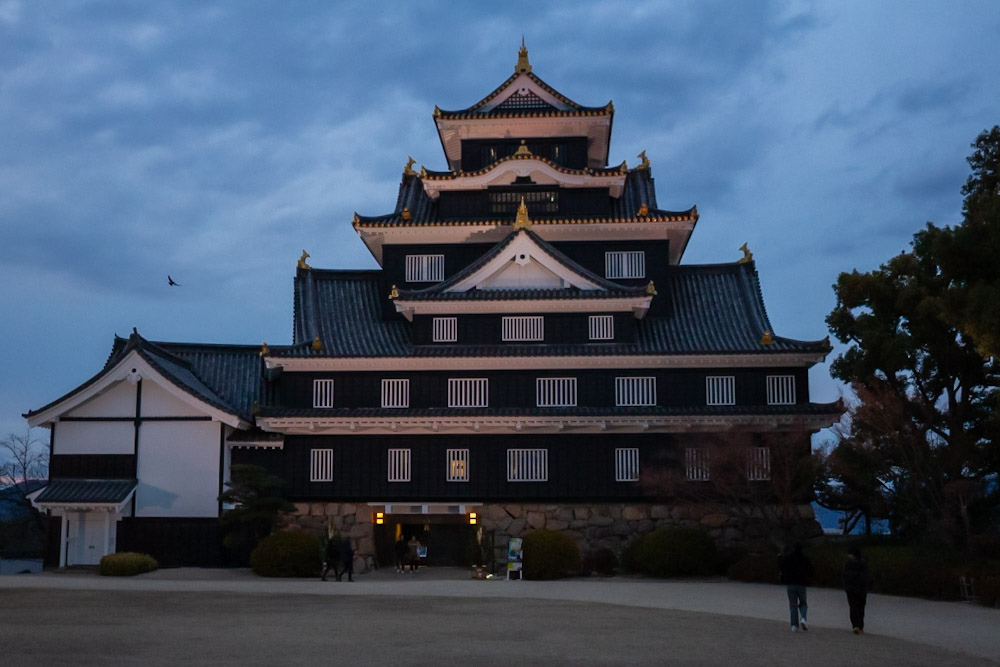
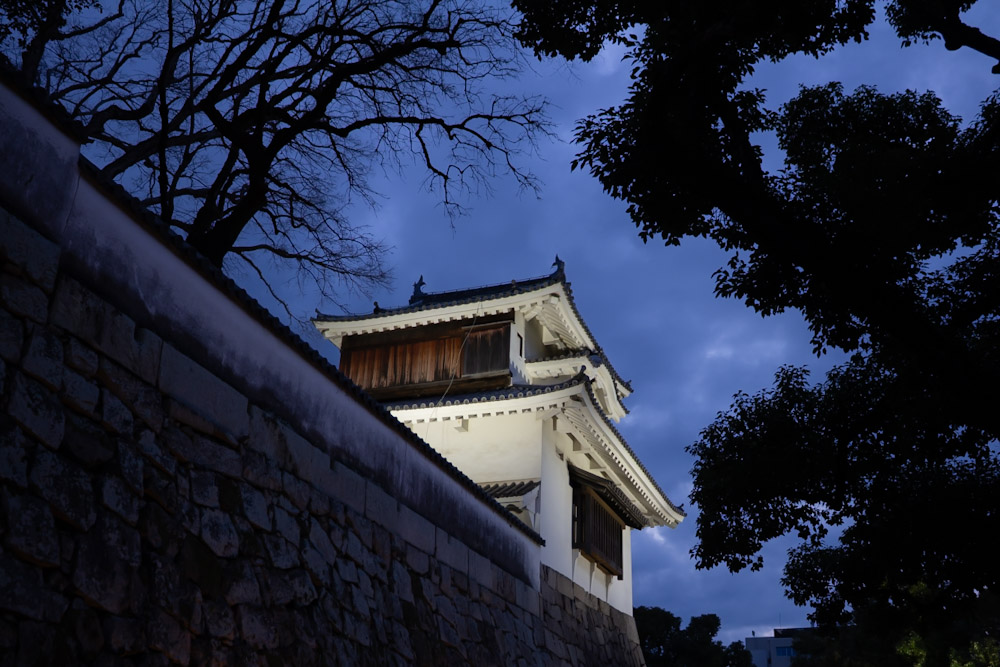
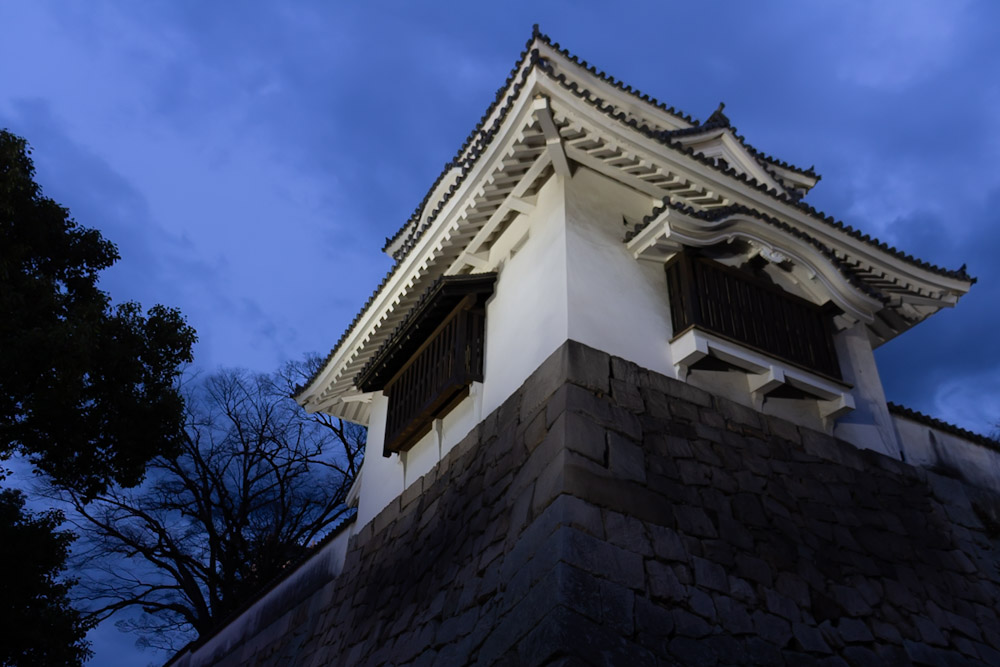
Years later, Ukita declared war on Urakami himself, eventually ousting his former master and taking over the Bizen Province. And that’s how he earned his desgination of “Great Villian.” Ukita contributed greatly to the development of Okayama, though, by improving road access and thereby attracting merchants to the area. He passed away in 1582.
Naoie’s son, Hideie, continued to renovate the castle after his father’s death. He was the one who placed the main enclosure and keep on the hill of Okayama, where it stands today. The Asahi River protected the north and east sides of the castle, inbetween which Hideie established a castle town. This informed the layout of present-day Okayama.
Present-day Okayama Castle sits inside Ujo Park, which is free to enter and explore. You can check out the main keep of the castle, but only within business hours for a small fee. The park also includes the Okayama Korakuen, an Edo-era garden with ponds and temples, and the Okayama Prefectural Museum, which showcases the area’s history and culture.
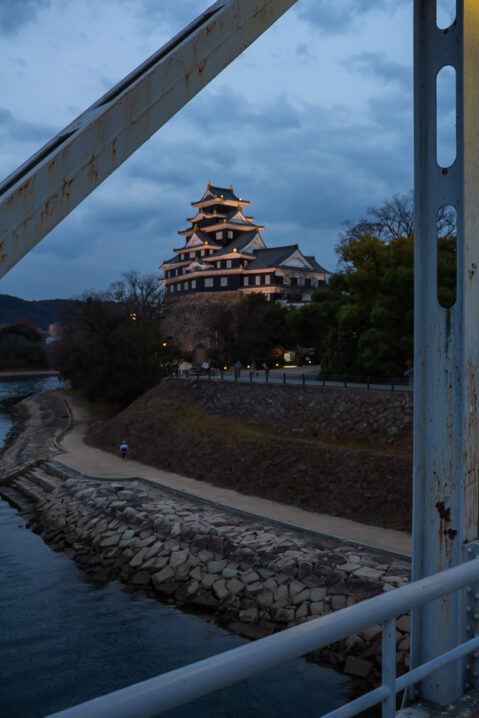
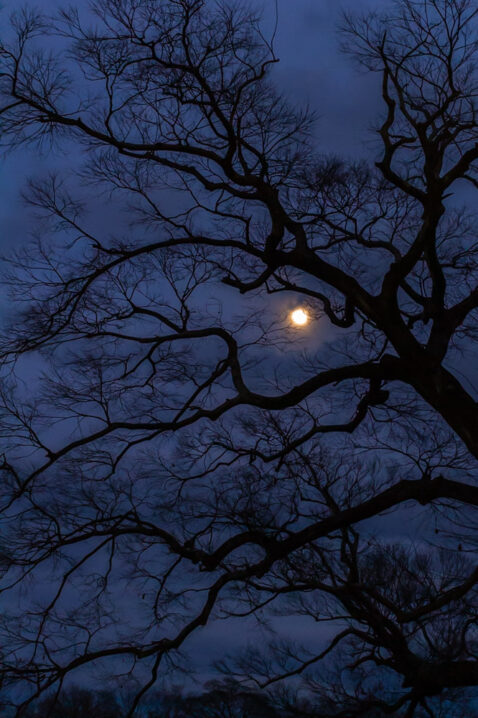
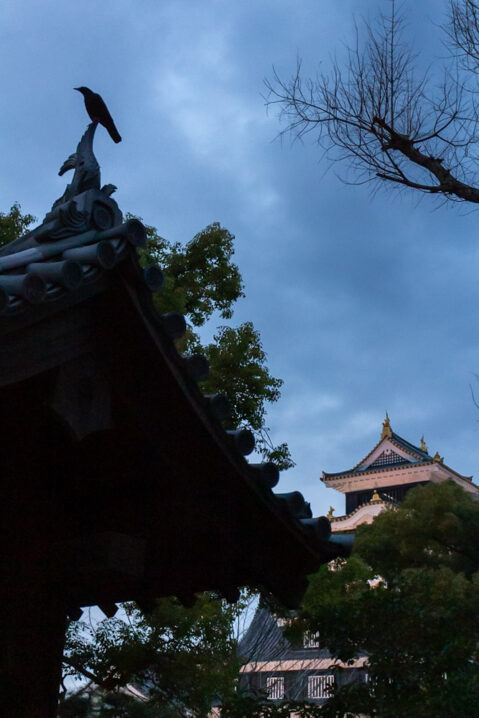
I visited the castle on one winter evening after a long day of traveling, and boy was it a treat. I was greeted by—no joke—actual crows, and a deep indigo sky as the last light of the day crept behind the dark clouds. The black exterior, which looked almost blue in the light, offers something truly unique, especially if you’re used to the more traditional white walls of Japanese castles.
Okayama is a destination in its own right, offering visitors plenty to see and do away from the hustle and bustle of more well-known locations in Japan. The city is also easily accessible via bullet train from Hiroshima (40 min) and Osaka (45 min), making it a great day trip option as well.
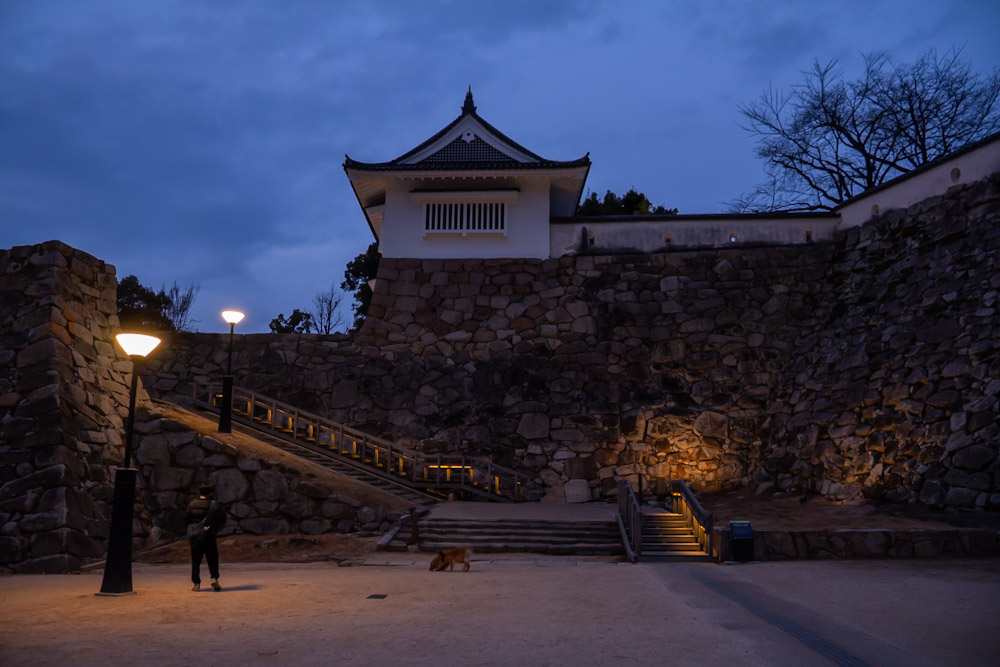
Visit Okayama Castle
Okayama Castle is a 30-min walk from JR Okayama Station. It’s also accessible by bus and streetcar. From JR Okayama Station, take the streetcar bound for Higashiyama and get off at Shiroshita. The castle is a 10-min walk away. Alternatively, take the bus bound for Okaden Takaya or Saidaiki via Higashiyama, get off at Kencho-mae, then walk for 5 minutes.
Hours: 09:00~17:30 (Last entry at 17:00)
Admission: 400円
